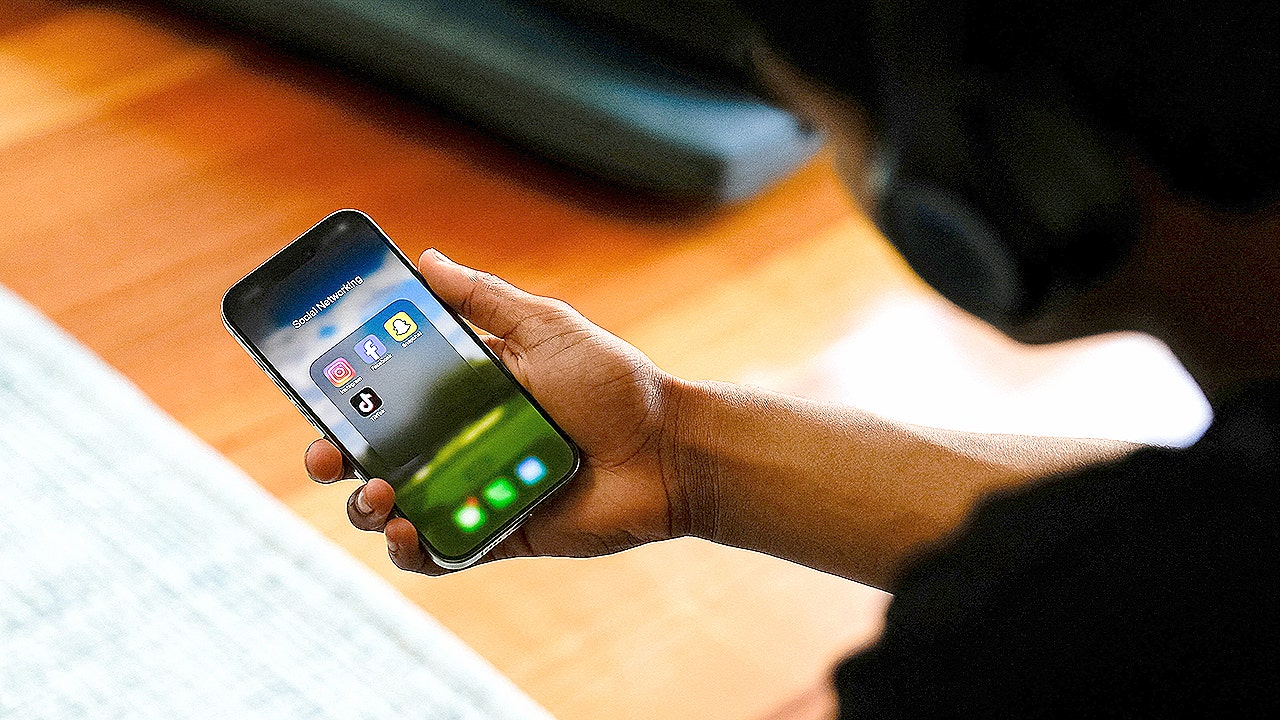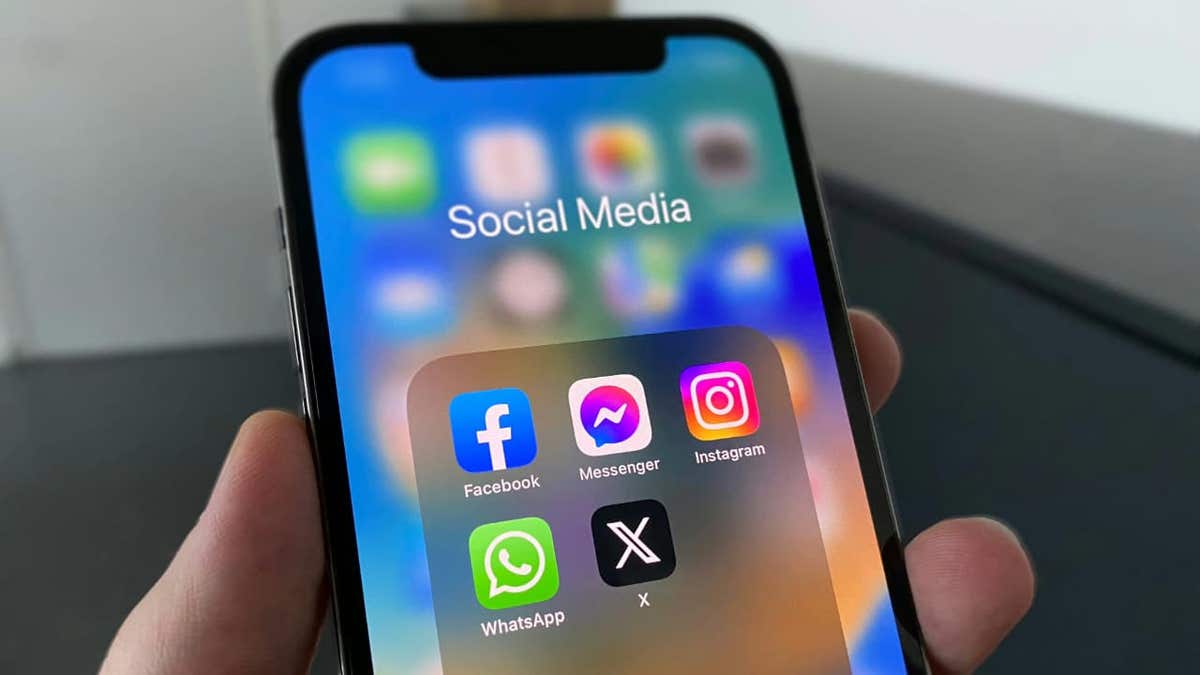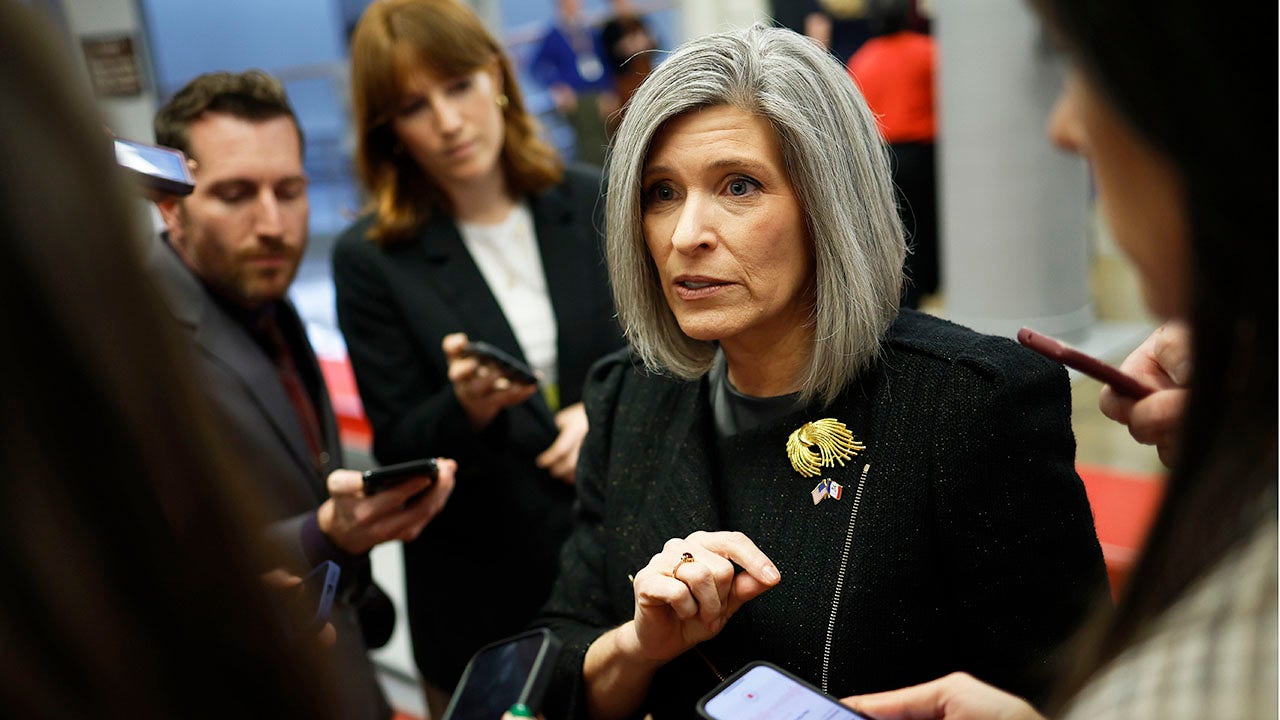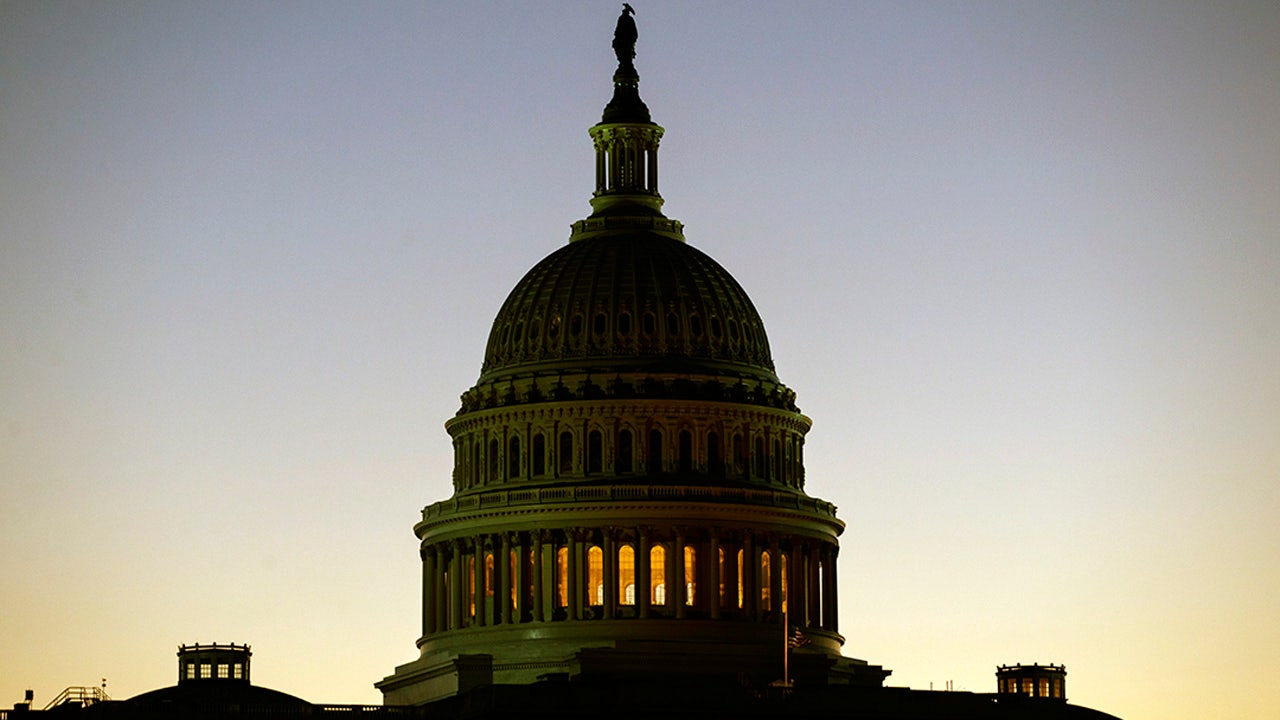When Donald Trump is inaugurated as president for the second time in January 2025, he will assume power over the regulation of a tech industry that’s changed significantly since his first term began in 2017. The tech industry’s honeymoon period with the US government has fizzled, and both Trump and his successor, President Joe Biden, took a skeptical stance toward tech CEOs, albeit for different reasons. Their antitrust enforcers initiated some of the first major anti-tech monopoly actions in decades.
Technology
What a second Trump presidency means for tech
/cdn.vox-cdn.com/uploads/chorus_asset/file/23951553/VRG_Illo_STK175_L_Normand_DonaldTrump_Negative.jpg)
Now, the tech industry has wised up. Most CEOs have looked back at the last eight years of techlash and seemed to conclude that they should be as visibly apolitical as possible — though they’re happy to lobby behind the scenes. At the same time, some have gambled that being in Trump’s good graces would be beneficial — and that risk seems to have paid off. Meta CEO Mark Zuckerberg, who Trump has literally threatened to send to prison, praised the president-elect’s fist pump after the attempted assassination and has made nice with Republicans about Meta’s content moderation choices. Amazon founder and Washington Post owner Jeff Bezos killed an endorsement of Kamala Harris in the paper. And, of course, Tesla CEO and X owner Elon Musk has made himself one of Trump’s chief allies, securing a promise that he could run a “Department of Government Efficiency” (DOGE).
Trump, meanwhile, will have more power than ever — he’s rooted out former supporters who encouraged restraint during his first term, and key allies have sprawling plans for overhauling the administrative state.
All this to say, the next four years of tech policy will be unpredictable and erratic. But even as Trump tries to expand his authority, he’ll need support from the courts and Congress. These are the policies we’ll be tracking as Trump reassumes the presidency and what he could realistically do.
AI
A Trump presidency likely means a less constrained AI industry. Trump has promised to repeal the Biden administration’s AI executive order, which instructed agencies to create testing standards and guardrails to prevent AI from being used in discriminatory ways, like in allocating housing or determining legal outcomes in the criminal justice system. Trump previously signed his own executive order covering AI safety and standards, but it did not touch on discrimination. The second Trump administration will likely deprioritize AI discrimination safeguards and discourage the use of the Defense Production Act to require more transparency, something conservatives have characterized as government overreach.
AI policy is an area where Elon Musk will likely seek to exert his influence, assuming he and Trump remain on good terms. Musk runs xAI and has been critical of incumbent players like OpenAI — a firm he cofounded but later distanced himself from and sued. Musk has supported AI safety measures like California’s controversial and ultimately vetoed SB 1047, and he previously signed a call for a moratorium on major AI developments for safety reasons. But his focus on existential risks has been criticized by some AI researchers as a distraction from more immediate risks like discrimination.
AI policy is an area where Musk will likely seek to exert his influence
It’s also not yet clear how Trump will handle thorny copyright issues surrounding generative AI, including what information large language models are allowed to train on. AI executives, including Musk, could seek to shape how Trump views the issue in a way that’s favorable to them.
Antitrust
Trump’s approach to antitrust enforcement could be based mainly on personal grievances. Bloomberg Intelligence senior litigation analyst Jennifer Rie writes that “enforcement could be idiosyncratic based on president-elect Donald Trump’s view of the companies or industries involved.” Adam Kovacevich, CEO of the left-of-center tech industry group Chamber of Progress, bluntly said we’ll see a “‘Trump Welfare Standard’: is this company nice to Trump?”
Though Trump’s VP pick, JD Vance, has publicly praised Federal Trade Commission Chair Lina Khan, it’s not clear how committed Vance is to this stance or how much sway he will have. If he does get a say here, we could expect a continued crackdown on big tech firms to benefit “little tech” or startups that VCs like Andreessen Horowitz (another Trump supporter) want to see rocket with growth.
“Republicans no longer uniformly lean more business-friendly than Democrats.”
While business leaders may be relieved if Khan leaves the FTC, Rie says we shouldn’t expect “a return to the relaxed antitrust climate of 10 years ago … some aspects of the current aggressive approach will stick. Republicans no longer uniformly lean more business-friendly than Democrats.” Still, while she says it largely depends on Trump’s appointments, merger approvals could become swifter and recently revised merger guidelines could be unraveled.
Trump’s administration will likely continue the existing legal fights against Meta, Google, Apple, and Amazon (including two cases filed during Trump’s first term). But it could pursue more modest remedies, depending on who he appoints — and how Trump feels about a company like Google on any given day. “A slight increase in settlement prospects is possible down the road, especially if the cases don’t seem to be going well for the agencies,” Rie writes. “Trump doesn’t believe Google should be broken up, though we didn’t expect this to happen anyway.” Kovacevich also says Trump could use the cases “as leverage over the companies to get favorable treatment on speech and content concerns.”
TikTok
Perhaps Trump’s greatest flip-flop issue has been his stance on TikTok. Trump championed the original TikTok ban effort, which was shot down by the courts. But he’s more recently said he opposes a ban because it would just benefit Meta. Trump’s turnaround reportedly came after he met with Republican donor Jeff Yass, who has a major stake in ByteDance.
Under the Biden administration, Congress overwhelmingly passed a bill that could ban the social video app unless ByteDance divests it by mid-January, and Biden signed it into law. The DC Circuit Court of Appeals is currently deliberating about whether that law can be upheld and will likely release a decision by the end of the year. But TikTok’s chances of dodging a ban only “slightly” improve under a Trump presidency, according to Bloomberg Intelligence litigation analyst Matt Schettenhelm.
The law doesn’t give Trump “much room” to play with
If the DC Circuit decides to uphold the law and the Supreme Court declines to take it up or upholds that ruling, what Trump can do is somewhat limited. He could grant an extension of up to 90 days for ByteDance to complete its divestiture of TikTok, but under the law, he would need to certify to Congress that there’s an actual plan underway. The law does leave the president some discretion to determine whether more apps besides TikTok fall under the divestiture law’s purview and what represents an adequate separation. But TikTok is written into the statute, so Trump can’t just decide it no longer applies.
The law doesn’t give Trump “much room” to play with, Schettenhelm tells The Verge in an email, though he could exercise some judgment in approving TikTok’s divestiture proposal. Even if Trump took the “unusual” step of announcing his Justice Department wouldn’t enforce the law, Schettenhelm writes in a note to clients, “companies that carry the app would be undertaking enormous risk that Trump wouldn’t change his mind and seek crippling penalties. We doubt they’d do so.”
If the court strikes down the law — perhaps because it finds it violates the First Amendment or because Congress didn’t develop a strong enough record in the relatively quick lead-up to its passage — then the legislature would need to do the process over. While the bill had very strong bipartisan support the first time around, now that Trump has said he opposes a TikTok ban, it seems less likely Congress would spend valuable time on a bill that the president may not sign.
Tariffs and China
Trump famously started a trade war with China in his first term in office, and if his campaign rhetoric is to be believed, we’ll see a continuation of such economic policies this time. While Biden has implemented some protectionist economic policies, including export controls on advanced semiconductors, Trump has floated tariffs on goods imported from China at a rate of 60 to 100 percent.
That could have big implications for the many tech companies that use components made in China and for any companies that rely on China for a significant part of their business strategy (like Apple and Tesla). But because of that connection, this is another area where Elon Musk’s influence could be a wild card.
Alongside his promises of mass deportations, Trump’s China tariffs could dramatically change day-to-day life in America, as severe price hikes for imported goods would throw countless people’s lives and livelihoods into chaos. How far the administration will go is an open question, and one that makes predicting the future with any certainty — inside and outside the tech industry — difficult to do.
Net neutrality and telecom policy
Net neutrality — which already faces an uphill battle in the courts after SCOTUS rolled back Chevron deference — is likely dead under a Trump administration. Bloomberg Intelligence analyst Nathan Dean predicts a 90 percent chance Trump’s Federal Communications Commission abandons the effort to reclassify broadband providers as common carriers and subject them to greater regulatory scrutiny.
A Republican-led FCC will also likely allow more concentrated control of TV stations, Dean writes, and loosen broadcast merger and acquisition rules. Republican FCC commissioner Brendan Carr, who served during the first Trump administration, has called for big tech companies to pay into the Universal Service Fund — currently funded by telecommunications providers — and suggested punishing TV networks under broadcasting rules.
Musk could seek to limit programs that help Starlink’s competitors
It’s not totally clear yet how Trump’s FCC will handle other key broadband policy issues, including the rollout of the government’s Broadband Equity, Access, and Deployment (BEAD) infrastructure investment program. But once again, Elon Musk’s influence could become important here. Musk runs the satellite internet company Starlink, which has been passed over for some government contracts, but could lobby for more favorable policies under Trump. For example, the BEAD program currently favors fiber broadband, and Musk has critiqued the program as an “outrageous waste of taxpayer money.”
In his government efficiency role or in a more informal way, Musk could seek to limit programs that help Starlink’s competitors, like the Universal Service Fund, according to CNET. That program helps service rural communities with broadband — places where Starlink is well positioned to move in.
Content moderation
Conservatives including Trump have long complained about social media platforms suppressing conservative speech and accused them of bowing to Democratic government pressure to remove things like election or vaccine misinformation. Even before his reelection, platforms like Meta had heeded Republican pushback and loosened their moderation standards.
A Trump administration and Republican legislature could rework the Section 230 liability shield to let them actually punish companies for moderation decisions. In addition to the option of passing actual laws changing Section 230, Brendan Carr suggested in his Project 2025 chapter that the FCC could narrow its protections for a broad range of content moderation decisions. Ultimately, any executive or legislative changes to online speech rules could face the Supreme Court, which has so far upheld the right to conduct content moderation, although it signaled openness to potential legal changes in the future.
Kids online safety
Trump hasn’t said much about where he stands on this topic or on the leading congressional bill on the subject, the Kids Online Safety Act (KOSA). That bill remains stalled in the House after passing through the Senate (in combination with an update to children’s data privacy law), and it’s not yet clear what could happen in future congressional sessions. Current Republican House leadership has expressed concerns that KOSA could unduly limit speech, so a Democratic House might be more open to giving it floor time, but ultimately, the concerns with the bill don’t fall entirely down partisan lines.
Adam Kovacevich, whose group has opposed KOSA, suggests Democrats should be wary of passing the bill under a Trump presidency — pointing to lead cosponsor Sen. Marsha Blackburn’s (R-TN) comments about protecting kids from transgender content online. “Democrats will have to decide whether they want to hand Trump & MAGA state law enforcers a powerful new censorship tool,” he writes.
Electric vehicles
Electric vehicle tax credits and other climate-focused policies will likely be in jeopardy under Trump, though that might be somewhat complicated by his connection with Musk, with Tesla standing to gain from EV-friendly policies. Still, Wedbush analyst Dan Ives previously said that Tesla’s “scale and scope … could give Musk and Tesla a clear competitive advantage in a non-EV subsidy environment.”
Tesla’s “scale and scope … could give Musk and Tesla a clear competitive advantage in a non-EV subsidy environment”
Bloomberg Intelligence analyst Nathan Dean sees just a 30 percent chance of continued EV tax credits under Trump. He predicts continued rhetoric that EVs are “a boon to China’s economy,” alongside efforts to replace the tax credits with consumer incentives that could benefit traditional carmakers like General Motors, Ford, and Stellantis.
Semiconductor policy
Under the Biden administration, Congress passed the bipartisan CHIPS and Science Act, which injected funds into creating a domestic semiconductor production industry — something experts say is a national security necessity and critical to maintaining control over the supply chain for important technologies including medical tech. But Trump called the bill “so bad” during his appearance on Joe Rogan’s podcast, and soon after, House Speaker Mike Johnson (R-LA) said he was open to repealing the law (though he later walked back those comments). Trump can’t undo a law on his own, but he could perhaps instruct his Commerce Department to slow-walk aspects of its rollout.
Crypto
Trump has made significant overtures to the cryptocurrency industry, headlining a major Bitcoin conference this summer and picking up significant support from prominent crypto investors like Marc Andreessen and Ben Horowitz. With Trump’s election, the industry is likely to get its top wish: the ouster of Securities and Exchange Commission Chair Gary Gensler, whom the industry views as its chief antagonist. Expect more permissive and hands-off regulation of this industry, as Trump has called for making the US a “Bitcoin superpower.”

Technology
These earbuds include a tiny wired microphone you can hold

Despite the best efforts of companies like DJI to shrink wireless wearable mics and make them as unobtrusive as possible, a lot of content creators still prefer a mic they can hold. So as wired headphones continue to make a comeback, Plantronics has released a pair of USB-C earbuds called the Conch One with their microphone attached to a short cable instead of being integrated into the inline remote.
Portronics sells many of its products on Amazon, but at launch the Conch One are only available through the company’s website and Amazon India for ₹1,999, or around $23. They feature 14.2mm drivers so you should get some good thump out of them, and the inline remote includes volume and playback controls, a mic button, and a unique mode button. A long press of the button toggles between a listening mode that offers four different EQ settings to enhance what you’re listening to, and a karaoke mode with eight different settings of its own.
With content creators going so far as to clip their wireless mics to random objects like forks to make them handheld, these buds could catch on as a much cheaper and simpler alternative that will work for as long as your phone has power. But if you only ever plan to use them while talking on the phone, they could be less convenient than an inline mic which are typically positioned close enough to pick up your voice. When not in use, the Conch One’s mic looks like it’s going to hang down too far to be usable hands-free.
Technology
Social media verification systems lose power as scammers purchase checkmarks to appear legitimate

NEWYou can now listen to Fox News articles!
Social media makes it easy to connect with people, but it also makes it just as easy for fraudsters to pretend they are someone they are not. Fake accounts, misleading checkmarks and smooth-talking profiles are everywhere, and not everyone knows how to spot them. I recently received an email from Marie from Boynton Beach, Florida, with a similar concern:
“I have been on X, and it seems quite a few people turn out to be not who they say they are. Mostly the ones that are verified. I am not that good tech-wise. Is there a way other than me knowing immediately they are a fraud?? Thank God I am not the type to give personal information or money.”
It is a fair concern, Marie. With scams becoming more polished, the line between real and fake accounts is harder to see. Let’s break down why fraud is so common on social media, the red flags you should look out for, and the simple habits that can keep you from getting duped.
Sign up for my FREE CyberGuy Report
Get my best tech tips, urgent security alerts and exclusive deals delivered straight to your inbox. Plus, you’ll get instant access to my Ultimate Scam Survival Guide – free when you join my CYBERGUY.COM newsletter.
WHATSAPP BANS 6.8M SCAM ACCOUNTS, LAUNCHES SAFETY TOOL
A man logs into his social media account on a laptop. Fraudsters often exploit online activity to trick users. (Kurt “CyberGuy” Knutsson)
Why social media is a playground for scammers
Social platforms are built for speed and visibility. Anyone can create an account in minutes, post content instantly and connect with strangers worldwide. This openness is what makes social media engaging, but it is also what makes it ripe for abuse. Fraudsters exploit the fact that posts, comments and messages are consumed quickly and often without much scrutiny.
Verification systems that were once meant to help users identify legitimate accounts have also lost some of their power. On platforms where checkmarks can be purchased, scammers can buy credibility without earning it. Add in the algorithms that reward viral content and sudden spikes in engagement, and you get the perfect environment for fraud to spread unnoticed.
Scammers know people often lower their guard on social media. In these spaces, users share personal details, build emotional ties with influencers and trust posts that look familiar. As a result, the combination of speed, trust and visibility creates an ideal environment for fraud to spread rapidly.
META DELETES 10 MILLION FACEBOOK ACCOUNTS THIS YEAR, BUT WHY?

A woman browses social media on her laptop. Scammers use fake accounts and misleading profiles to lure victims. (Kurt “CyberGuy” Knutsson)
The cost of falling for a scam
When people think of scams, they often imagine losing a one-time sum of money. The reality is far more damaging. Clicking a bad link or handing over credentials can snowball into long-term consequences. Once scammers get access to your information, it can be sold on dark web marketplaces, used to open fraudulent accounts or leveraged for identity theft.
There is also the reputational cost. If your social media account is hijacked, scammers can use it to trick your friends, family or followers, spreading fraud even further under your name. Cleaning up that mess can take weeks and may permanently damage your credibility.

Social media apps are prime hunting grounds for scammers who rely on speed and trust to deceive victims. (Kurt “CyberGuy” Knutsson)
Practical steps you can take to stay safe on social media
There are simple ways to protect yourself without needing technical expertise. I have listed some of the crucial steps below.
1) Scrutinize profiles before engaging
Fake accounts often have clear giveaways. Look at how long the account has existed, whether it posts original content and the kind of followers it has. Scammers usually recycle generic profile photos or steal images from real people. Reverse image searches can help you confirm if a photo belongs to someone else.
Even with verification, be skeptical. On platforms where checkmarks can be purchased, anyone can appear “official” without being trustworthy. Treat every new interaction with caution until proven otherwise.
FACEBOOK CRYPTO ADS LEAD TO DANGEROUS MALWARE SCAMS
2) Avoid clicking on random links
Fraudsters often send links over DMs, comments or even ads. These links may lead to phishing sites designed to steal your credentials or malware that installs silently on your device. One careless click can expose your information.
This is where having strong antivirus software comes in. Even if you accidentally land on a malicious site, a strong antivirus can block harmful downloads and warn you before malware runs. Think of it as a safety net for moments when curiosity gets the better of you.
The best way to safeguard yourself from malicious links that install malware, potentially accessing your private information, is to have strong antivirus software installed on all your devices. This protection can also alert you to phishing emails and ransomware scams, keeping your personal information and digital assets safe.
Get my picks for the best 2025 antivirus protection winners for your Windows, Mac, Android and iOS devices at Cyberguy.com/.
3) Protect your logins
Phishing scams frequently mimic login screens for X, Instagram or Facebook. They are designed to trick you into typing your username and password into a fake form. Once you do, the scammer immediately takes over your account.
A password manager can be a lifesaver here. It only fills in your login details on the genuine site you have saved. If it does not recognize the page, that is a red flag that you are looking at a fake. On top of that, a password manager makes it easier to use strong, unique passwords for each account, which limits damage if one gets compromised.
Next, see if your email has been exposed in past breaches. Our No. 1 password manager pick includes a built-in breach scanner that checks whether your email address or passwords have appeared in known leaks. If you discover a match, immediately change any reused passwords and secure those accounts with new, unique credentials.
Check out the best expert-reviewed password managers of 2025 at Cyberguy.com/.
4) Keep personal info under wraps
The less information fraudsters can find about you, the weaker their scams become. Many impersonators use details like your hometown, job or relatives to build trust. If your email, phone number or address is floating around the web, scammers can weaponize that too.
A personal data removal service can help here by scrubbing your details from people-search sites and data brokers. While not foolproof, reducing your digital footprint makes you a harder target for impersonation or social engineering scams. They aren’t cheap, and neither is your privacy. These services do all the work for you by actively monitoring and systematically erasing your personal information from hundreds of websites. It’s what gives me peace of mind and has proven to be the most effective way to erase your personal data from the internet. By limiting the information available, you reduce the risk of scammers cross-referencing data from breaches with information they might find on the dark web, making it harder for them to target you.
Check out my top picks for data removal services and get a free scan to find out if your personal information is already out on the web by visiting Cyberguy.com.
Get a free scan to find out if your personal information is already out on the web: Cyberguy.com/.
SOCIAL SECURITY ADMINISTRATION PHISHING SCAM TARGETS RETIREES
5) Stay alert to impersonation scams
Fraudsters often pretend to be well-known figures, influencers or even customer support staff. They use urgency like “limited offer,” “you have won” or “your account will be closed” to pressure you into responding fast.
When money, gift cards or personal details are involved, slow down. Contact the real brand or person through official channels to verify. If you are unsure, simply ignore the request.
6) Trust your instincts
One of the strongest defenses you have is your gut feeling. If a verified profile is asking for money, if a giveaway sounds too good to be true or if someone’s tone feels off, it probably is. Scammers rely on you ignoring that little voice that says something is not right.
Take a breath, pause and think before you act. That moment of hesitation often makes the difference between staying safe and becoming a victim.
Kurt’s key takeaway
Social media can be entertaining, informative and even empowering, but it is also one of the easiest hunting grounds for fraudsters. They thrive on speed, trust and distraction, hoping you will react before you think. While no tool or habit can guarantee absolute safety, combining skepticism with smart protective steps puts you in a much stronger position.
Do you think paid verification badges make it harder to spot scammers? Let us know by writing to us at Cyberguy.com/Contact
Sign up for my FREE CyberGuy Report
Get my best tech tips, urgent security alerts and exclusive deals delivered straight to your inbox. Plus, you’ll get instant access to my Ultimate Scam Survival Guide – free when you join my CYBERGUY.COM newsletter.
Copyright 2025 CyberGuy.com. All rights reserved.
Technology
Can Luigi Mangione get too big to jail?

The first people in line on Tuesday, I was told, started camping out on the sidewalk two days ago. Luigi Mangione, the man accused of gunning down UnitedHealthcare CEO Brian Thompson in December 2024, was due in court at 9AM ET for a hearing in one of three concurrent criminal cases against him. And this time everyone was prepared for the mayhem: the signs, the fans, the livestreamers, the protests, the media circus. That’s why the line started even earlier than last time — the people who really wanted to get in to see him knew that no time was too early.
Mangione is both ubiquitous and fleeting. The last time the public saw him (aside from a bizarre, unauthorized appearance in a men’s shirt listing on Shein) was in February at this same courthouse in Manhattan, when hundreds of members of the general public and media convened for a routine pretrial hearing. He exists in memes, in passing references, and in content moderation decisions, and he lives rent-free in the mind of Donald Trump — yet most people are likely not thinking or talking about Mangione day to day. They are reminded of him when new photos drop or when there are incremental updates in the cases against him. But the wall-to-wall coverage of the case has waned, and it’s the people who are the most tapped in that are working to keep interest in the case alive. Mangione and the larger discussions around healthcare reform are one item in a list of approximately 8,000 pressing topics swirling in the US. How do you keep attention and energy alive in an information ecosystem defined by its fragmentation?
Court officials and police seem to have learned their lesson from February: don’t let a million people inside
The hearing on Tuesday was much more eventful than the one in February: Mangione’s team successfully got two terrorism-related charges tossed in the New York case, a development that supporters of his are celebrating. Given the magnitude of the news, the tempered atmosphere — and the smaller crowds — was noticeable.
Court officials and police seem to have learned their lesson from February: don’t let a million people inside. Instead of admitting members of the public to a hallway outside the courtroom where they could set up camp, the court kept most on the sidewalk.
There are fewer people here than in February, but in some ways the supporters and frenzy are even more fervent. Mason Alexander, who told The Verge he’d been one of the few to make it inside the courtroom for the first hearing, arrived at 11PM the night before and was 25th in line, meaning he wouldn’t get a spot the second time. Some in line have numbers written on the backs of their hands, which I later am told are not part of any official numbering system from the courthouse but were the work of an attendee walking around with a marker, trying to bring order to the line.
“The case just resonated with me,” Alexander says, explaining why he showed up. “Obviously what he allegedly did isn’t something to be cheered about, but I think it was beneficial in the way that it put a spotlight on [the healthcare system issue] that I think is probably the most important in the country, and how much it affects everyday people. It got people talking.”
People Over Profit NYC, a grassroots healthcare reform group with a focus on Mangione’s case, again organized a rally outside. A giant homemade spinning wheel has slots reading “APPROVED” and “DENIED” — spin the wheel to learn the fate of your insurance claim. There are Luigi hats, keychains, DIY T-shirts, flyers about local healthcare legislation. When I arrive shortly after 8AM, reporters and news crews outnumber rally attendees — there are fewer people here, too, than six months ago.
A POPNYC rally attendee who asked to remain anonymous, citing the current political climate, says “protest fatigue” could be a reason attendance dipped (the early morning timeslot also may have contributed).
“I think people are just tired, and they just want to either ignore what’s going on or just give up,” the attendee says. “That’s why we’re out here, to let them know we’re still here. Even if you’re tired, we’ll still go on. And maybe they’ll join us next time.”
There’s also the unavoidable reality that the hearing is happening a week after right-wing provocateur Charlie Kirk was killed at a public event in Utah. Though the two cases are not obviously connected, there’s been a swift and brutal crackdown from the American right wing, directed at anyone who is deemed to be “celebrating” Kirk’s murder. Private and in some cases innocuous social media posts are being used to report people to employers or dox them. It’s not surprising that Mangione supporters may be reluctant to be photographed at a rally for him.
It’s hard enough to keep major events and causes in the news, but Mangione’s case has unique, complicating factors. The central character — who many see as sympathetic — is accused of stalking and shooting Thompson point-blank (Mangione has pleaded not guilty). UnitedHealth Group has waged an all-out attack on critics, targeting filmmakers, social media users, and news outlets. Tech companies are working to moderate Mangione-related content, though some supporters complain that their content and accounts are being taken down without explanation. There is also the general specter of violence that clouds current US political discourse. It’s never a good time to be an alleged assassin, but especially not now.
Part of what makes the Brian Thompson murder case so strange is the way most people consume and follow it: through the hundreds of photos and videos of Mangione looking “hot.” Mangione’s overlapping and high-stakes legal battle is relayed to the public via new photos of him; it obfuscates both the seriousness of the crime and charges, as well as the punishment he faces if convicted. There is a clear tonal disconnect in coverage of the case: the Daily Mail is both running stories about the “sick” fans that support him and posting 29-photo slideshows to TikTok that are a collection of Mangione’s face from every possible angle.
On Tuesday, Mangione wore a khaki prison outfit instead of street clothes. He was once again shackled at the ankles, wrists, and waist — something his attorneys have complained about. As we waited for him to enter, another reporter remarked that it felt a bit like a wedding: the press and two dozen or so members of the public kept glancing back at the slightest of noises, like we were waiting for a bride to walk down the aisle. A supporter who managed to get into the courtroom, who asked to be named as SAS, later told me she could hear his shackles before she saw him. Some online commenters described him as looking “pale,” “skinny,” and like he had been “crying a lot.” (I’m not really seeing this, personally.) After both hearings, there’s been a lot of reading into Mangione’s demeanor — but the truth is that the court dates have been exceedingly normal and professional. There is no deeper personality or psychology to be gleaned from being inside a room with him for 20 minutes.
The most significant development from Tuesday’s hearing brought good news for Mangione: Judge Gregory Carro, who is overseeing the New York state case against Mangione, dropped two major terrorism-related charges in what is seen as a major win for the defense. The state argued that Thompson’s murder was meant to “intimidate or coerce a civilian population,” but Carro found the claims to be “legally insufficient.” Carro says in essence that under New York law, the alleged “ideological” motive doesn’t fit the definition of terrorism.
As Carro announced that he was dropping the terrorism charges, a few supporters in the courtroom audibly reacted
“The court agrees with the defendant that the [state] appear[s] to conflate an ideological belief with the intent to intimidate or coerce a civilian population,” Carro writes. “While the defendant was clearly expressing an animus toward UHC, and the health care industry generally, it does not follow that his goal was to ‘intimidate and coerce a civilian population,’ and indeed, there was no evidence presented of such a goal.” Mangione still faces charges of second-degree murder in the New York state case.
As Carro announced that he was dropping the terrorism charges, a few supporters in the courtroom audibly reacted — a faint exclamation, maybe even a gentle clap, that drew a scolding from a guard.
On other motions, Mangione’s defense was less successful. Mangione is facing three concurrent cases: the one in New York, a separate state case in Pennsylvania, and a federal case. Mangione’s defense team has argued that the state and federal cases happening at the same time amounts to double jeopardy: the US Constitution bars defendants from being prosecuted for the same crime twice. Carro rejected the double jeopardy argument. Mangione’s lawyers have also argued that the federal case against him — which carries the possibility of the death penalty — should proceed before the state case. On Tuesday, Carro denied Mangione’s request to put the state case on hold. The next hearing in the state case is scheduled for December 1st. Mangione is due in court for the federal case a few days later.
Luigi Mangione’s fate and his public persona are inextricably linked. Widespread and sustained attention on his case depends on how often he can get in front of people through their digital feeds. The windows of opportunity to grab attention and deeper public engagement are limited because he is making public court appearances only once every several months. The public spectacle of the case is ever-present: Mangione’s attorneys have written at length objecting to him being shackled during court appearances that are then photographed and shared, saying they are “deeply prejudicial” and damaging to his right to a fair trial.
One avenue Mangione supporters have been pursuing is around jury nullification, when a jury acquits even if it believes a defendant committed a crime (in February, a truck with an LED billboard on the side showing jury nullification information circled the courthouse during the hearing). But even that relies on a massive public outreach campaign in an era of short attention spans and a fractured media ecosystem.
As I wrote in February, a cycle is beginning to take shape: One day Mangione is all we see on social media. The next he is gone. Rinse and repeat. While I was in court with my phone tucked away, friends texted me about new Luigi photos, just as they did six months ago. Is becoming a meme — no matter how beloved or reviled — enough to have your life spared? The stakes couldn’t be higher, and the culture couldn’t be more fickle.
0 Comments













